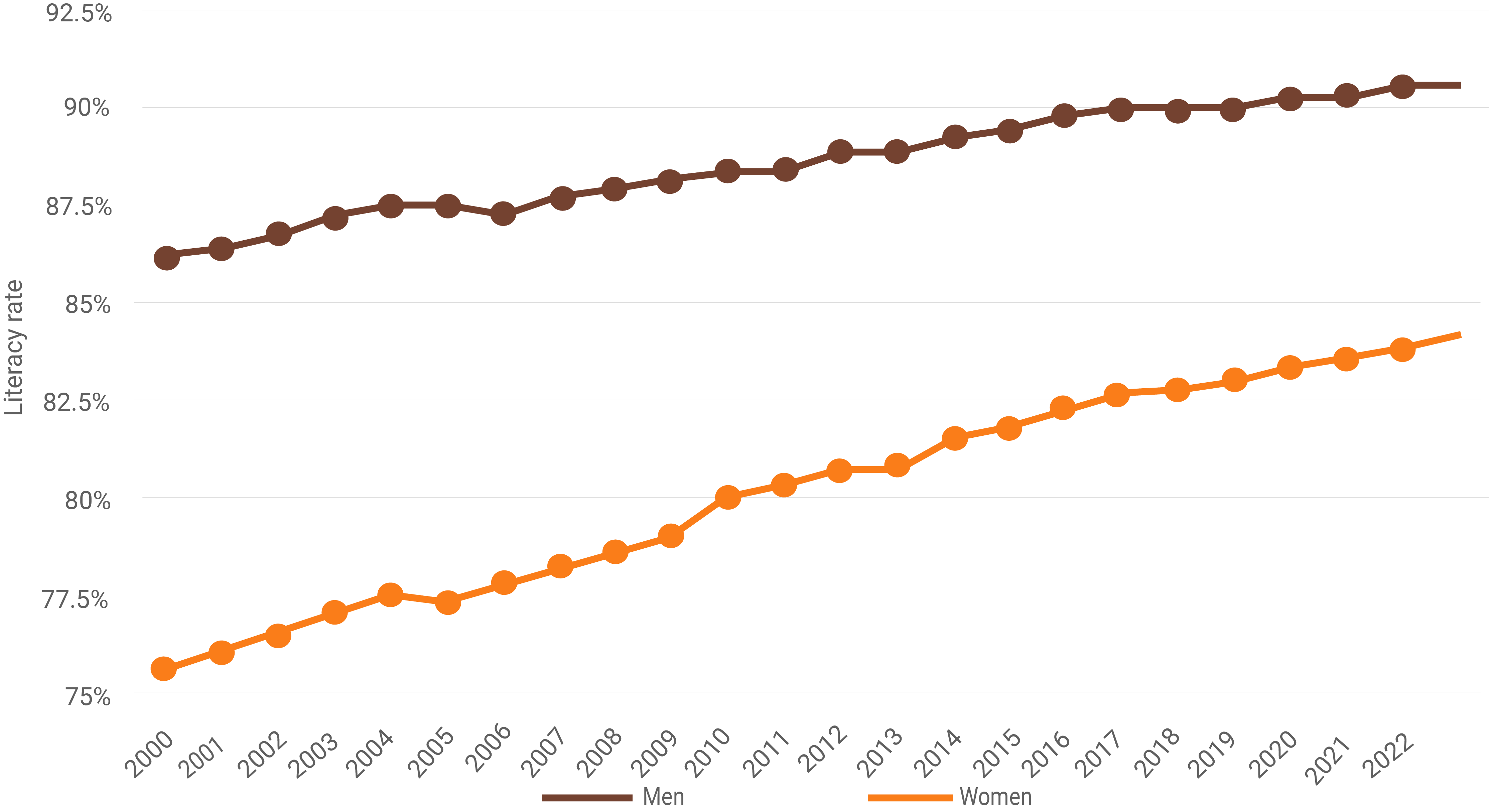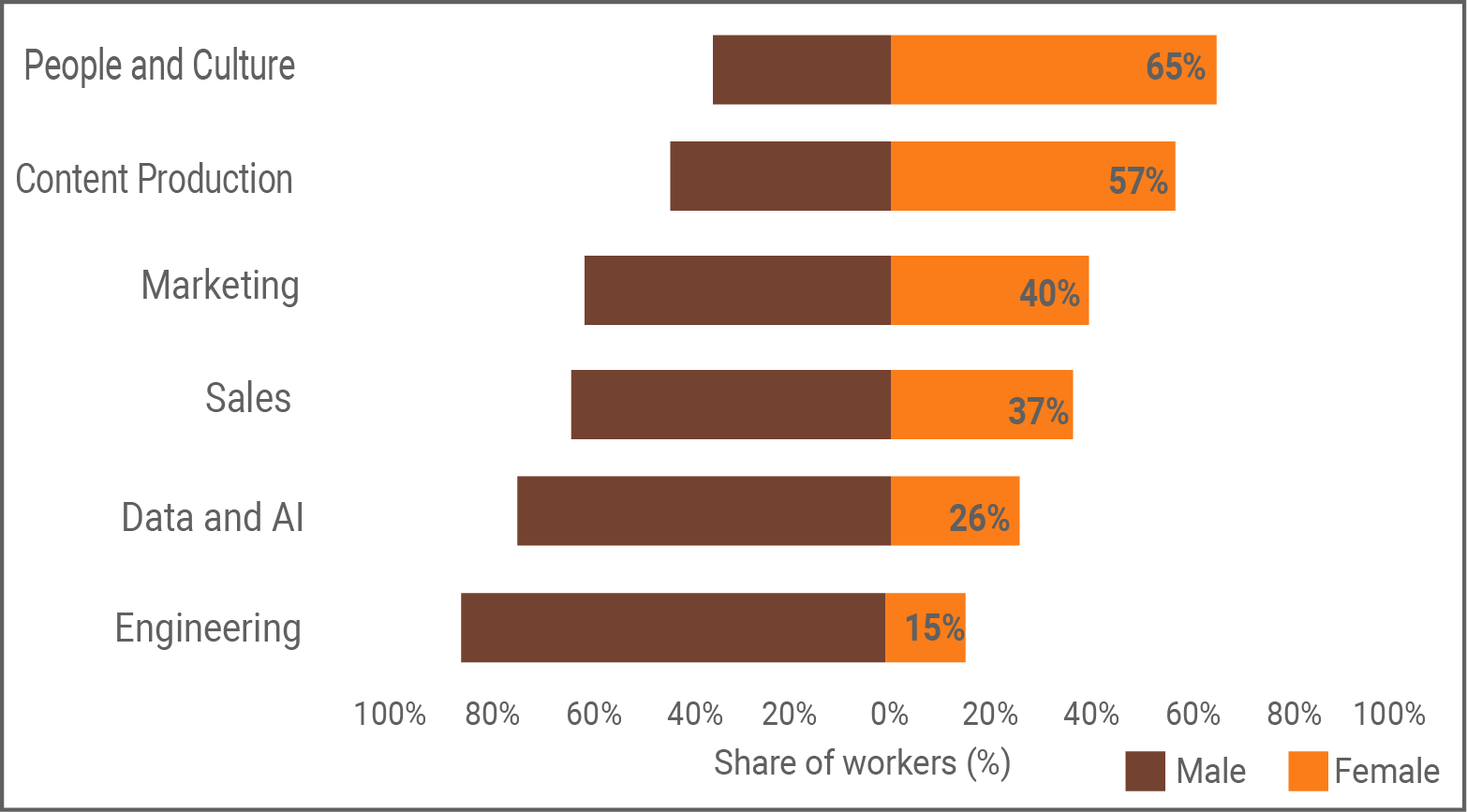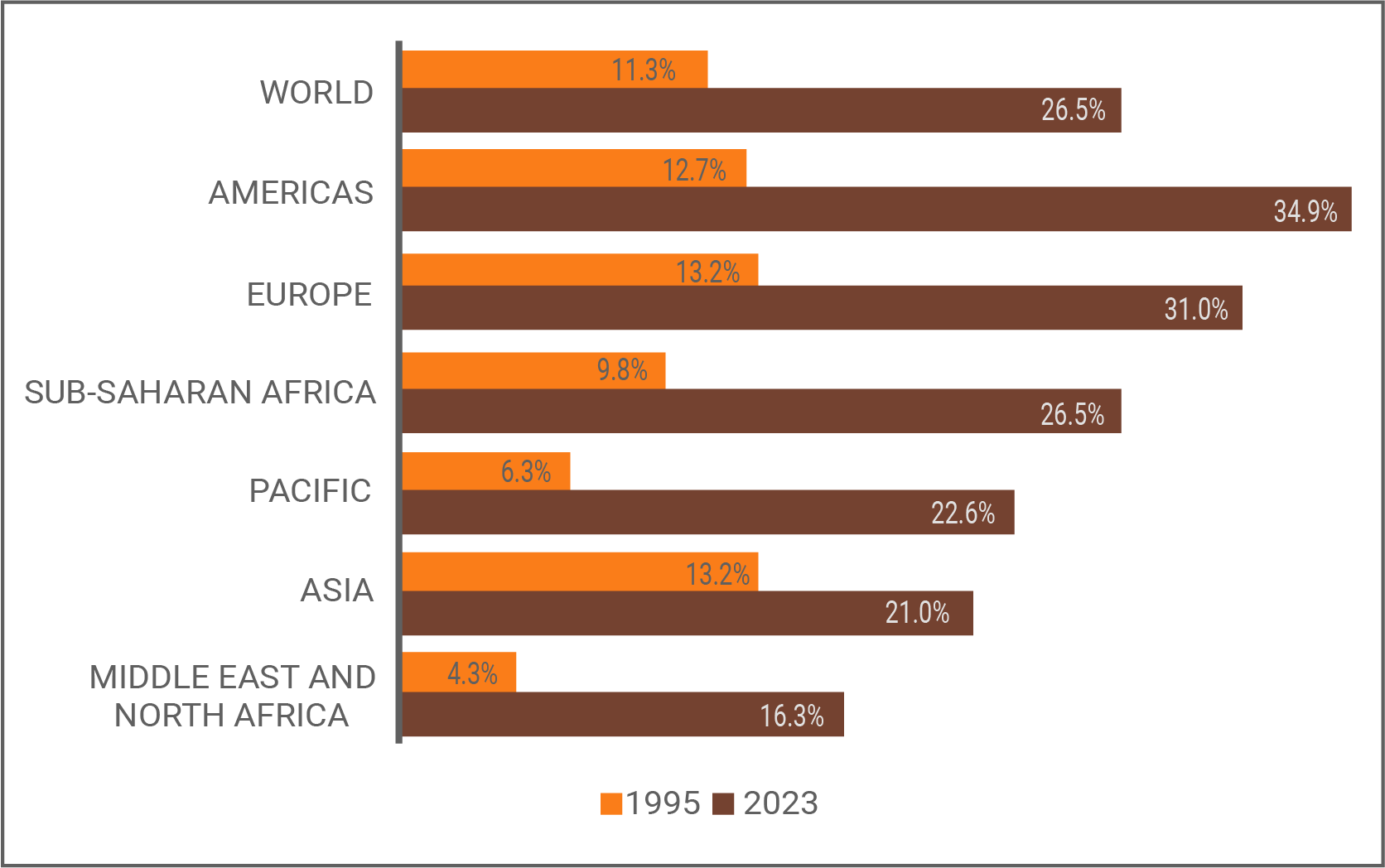Thema 8: Bridging the Gap
Prüfling A
Your school's international Women's Day theme is "Bridging the Gap". Students are invited to prepare presentations on female role models. Comment on the material.
Global adult literacy rate from 2000 to 2022, by gender

Adapted from https://www.statista.com/statistics/1220131/global-adult-literacy-rate-by-gender/ [accessed 6 September 2024]
Prüfling B
Your school's international Women's Day theme is "Bridging the Gap". Students are invited to prepare presentations on female role models. Comment on the material.
Share of male and female workers in different professional fields (2020)

Adapted from: https://www.weforum.org/publications/gender-gap-2020-report-100-years-pay-equality/in-full/the-future-of-gender-parity/ [accessed: 6 September 2024]
Prüfling C
Your school's international Women's Day theme is "Bridging the Gap". Students are invited to prepare presentations on female role models. Comment on the material.
World and regional average shares of women in parliaments (2023)

Adapted from: https://iknowpolitics.org/sites/default/files/2022_women_in_parliament_en-proof2-new.pdf [accessed: 6 September 2024]
Weiter lernen mit SchulLV-PLUS!
monatlich kündbarSchulLV-PLUS-Vorteile im ÜberblickDu hast bereits einen Account?
Note:
Please note that these solutions are only suggestions. There are various possibilities for argumentation.
Please note that these solutions are only suggestions. There are various possibilities for argumentation.
- To begin with, ...
- On the one hand / on the other hand
- It must be considered
- In my opinion ...
- I agree / I disagree
- One has to take into account that ...
Possible introductions to the topic and the argumentation
Prüfling A
- The graph shows the global adult literacy rate from 2000 to 2022, broken down by gender.
- The overall trend suggests that both men's and women's literacy rates increased steadily over this period.
- In 2000, the literacy rate for women was around 75%, while the rate for men was above 85%.
- By 2022, women's literacy rate reached around 85%, while men's literacy rate was around 90%.
- Hence, despite the improvement, there remains a gender gap, with men having a higher literacy rate, although the difference has decreased over time.
Comment on the material
Prüfling B
- This bar chart shows the share of male and female workers in different professional fields in 2020.
- In People and Culture, 65% of workers are female, making it the field with the highest proportion of women.
- In Content Production, women make up 57% of workers.
- In Marketing, women account for 40% of workers
- In Data and AI, only 26% of workers are female and in Engineering, women present just 15%, making it the field with the lowest female participation.
- The chart shows that women are overrepresented in People and Culture and Content Production. Men are overrepresented in Data and AI and Engineering, with significant gender gaps in these technical fields.
Comment on the material
Prüfling C
- The bar chart shows the world and regional average shares of women in parliaments in 2023, comparing these figures with those from 1995. Each region is represented by two bars: a lighter one for 1995 and a darker one for 2023.
- There has been an increase in the share of women in parliaments in all regions since 1995.
- The Americas and Europe have the highest representation of women, both exceeding 30%.
- The Middle East and North Africa has made progress since 1995 but still shows the lowest female representation globally.
- The global average of 26.5% is still far from gender parity.
Comment on the material
Argumente für alle Prüfungsteilnehmer
Ways of bridging the gap between men and women in different spheres of life.
- Equal access to education
- Workplace equality initiatives
- Scholarship programs for underrepresented genders
- Flexible work policies that offer paternity leave and flexible schedules to all employees to normalize shared family responsibilites